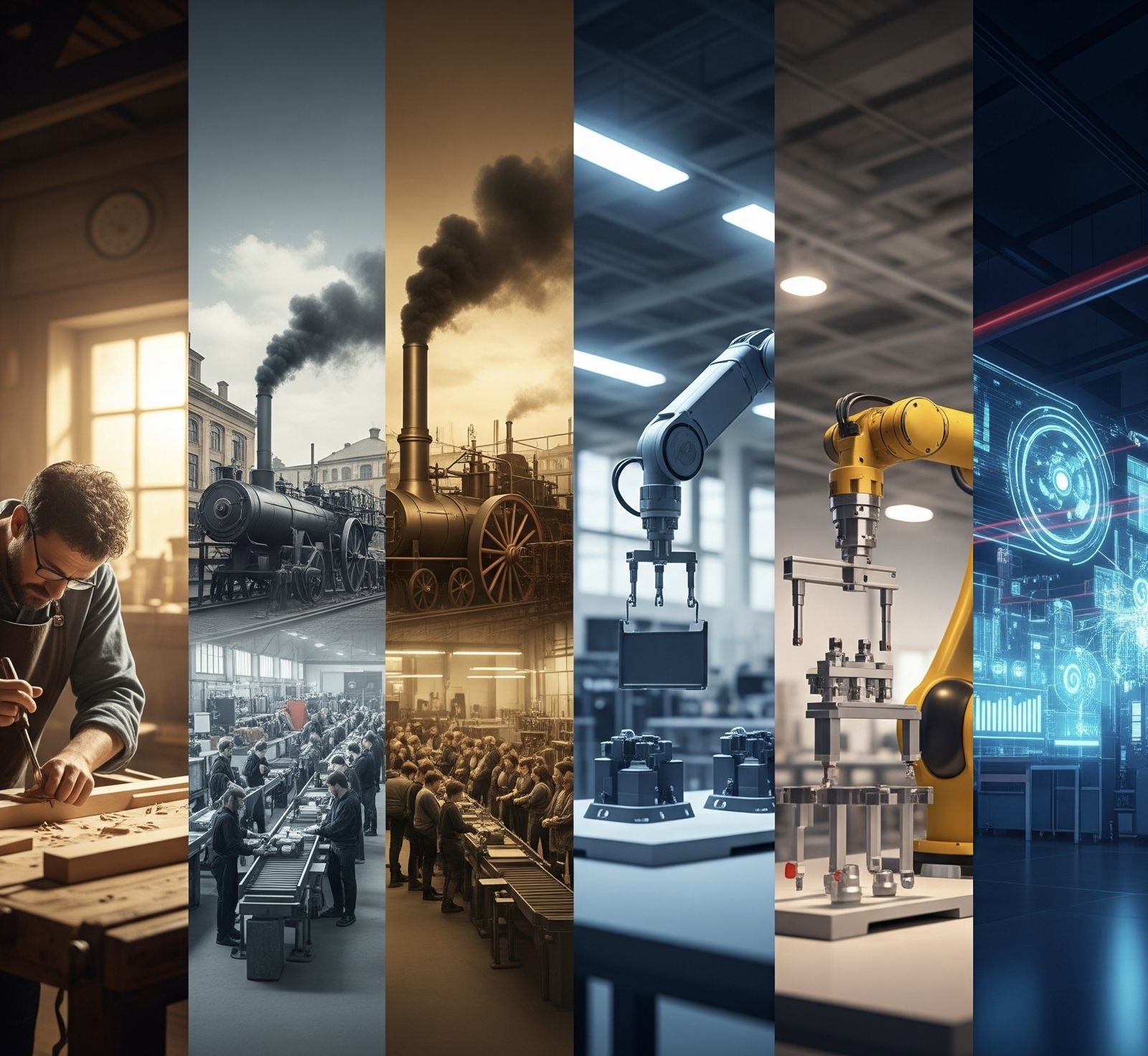
From Craftsmanship to Automation
From Craftsmanship to Automation
By: Destiny Dickerson
The evolution of manufacturing is one of the most important and fascinating stories in human history. What began as a profoundly personal and skill-based process has evolved into a vast, global system driven by machines, technology, and data. From the handmade tools of ancient artisans to today’s smart factories using artificial intelligence, the journey of manufacturing reflects human ingenuity, adaptability, and our drive to do more with less.
In the earliest societies, manufacturing was the work of individual craftsmen and women. Goods like textiles, tools, weapons, and pottery were produced by hand using traditional skills passed down through generations. These artisans didn’t just make things; they created functional art. For example, blacksmiths in medieval Europe would forge swords and armor with such precision that some techniques remain mysterious even today. In ancient China, silk weavers operated handlooms with exceptional expertise, producing some of the most coveted fabrics in the world.
This era of craftsmanship gave way to something radically new in the 18th century with the advent of the Industrial Revolution. Machines began to replace manual labor in many industries, particularly in the textile and metalworking sectors. Innovations like the spinning jenny, developed by James Hargreaves, and Richard Arkwright’s water frame allowed for faster and more efficient production of fabric. Factories began to replace workshops, and labor shifted from rural areas to urban centers. This transition wasn’t just about machines; it changed entire societies, sparked population booms in cities, and altered the rhythm of everyday life.
One of the most pivotal developments in modern manufacturing came in the early 20th century with Henry Ford’s introduction of the moving assembly line. Before this, cars were made one at a time, with workers assembling them piece by piece. But Ford revolutionized the process in 1913 by assigning each worker a specific task on a continuously moving line. This cut production time for a Model T from over 12 hours to just about 90 minutes. More than just a new method, Ford’s system symbolized a shift toward mass production, making cars affordable for average families; a feat previously unthinkable.
As the 20th century progressed, manufacturing continued to evolve through the introduction of automation. The rise of computers, programmable machinery, and industrial robots reshaped factories. Japan, for instance, led the world in lean manufacturing, a strategy that minimized waste and improved efficiency. Companies like Toyota pioneered this approach, using automation not just to speed up production but to refine it. Robots began handling dangerous or repetitive tasks, reducing workplace injuries and improving consistency.
Today, we’re living in what many call the Fourth Industrial Revolution, often referred to as Industry 4.0. This phase of manufacturing is characterized by innovative technologies that integrate physical systems with digital networks. Machines now have sensors that collect data in real-time, enabling them to self-correct, optimize performance, and even predict when maintenance is needed. For example, global tech giant Siemens utilizes digital twin technology to create virtual replicas of real machines, enabling engineers to test and optimize performance before implementing physical changes. Similarly, companies like GE integrate artificial intelligence to improve efficiency and reduce waste on the factory floor.
Yet, amid all this automation and high-tech innovation, there’s been a renewed appreciation for the original spirit of manufacturing: craftsmanship. The maker movement, which encourages individuals to create and sell handmade or custom products, is experiencing rapid growth. From handcrafted furniture to small-batch ceramics, consumers are once again valuing the personal touch, quality, and story behind a product. This trend demonstrates that while machines can produce faster and more cost-effectively, human creativity remains a vital component in the manufacturing process.
The history of manufacturing is far more than a timeline of machines and factories. It’s the story of how people have always found better, more innovative ways to create. It’s about solving problems, meeting needs, and imagining what’s possible. As we look ahead to a future filled with smart factories, 3D printing, and AI-driven production, it’s essential to remember that every bolt and circuit originated from a simple idea; an idea shaped by human hands.
Sources:
- Mokyr, Joel. The Lever of Riches: Technological Creativity and Economic Progress. Oxford University Press, 1990. https://global.oup.com/academic/product/the-lever-of-riches-9780195074772
- Landes, David S. The Unbound Prometheus: Technological Change and Industrial Development in Western Europe from 1750 to the Present. Cambridge University Press, 1969. https://www.cambridge.org/core/books/unbound-prometheus/BAADFEDF0DEAD1718BCA47980980262F
- Ford Motor Company Archives. https://corporate.ford.com
- Siemens Digital Industries. https://new.siemens.com
- Encyclopaedia Britannica. “History of Manufacturing.” https://www.britannica.com/technology/production-system